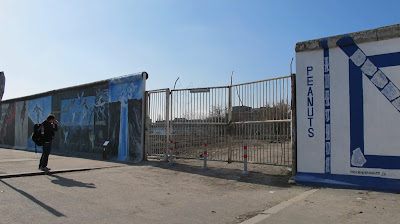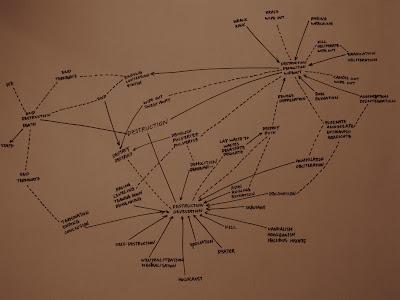Buildings emerge and decay. They promise permanence and security, although they are undoubtedly constantly remodeled and then disappear one day. Usually they are destroyed as the result of military conflicts or to make room for new buildings, and when they remain untouched, they are still inevitably subjected to the effects of natural forces and thereby to deterioration. To this extent, in contrast to the other arts, architecture, horticulture, and urban planning have a special relationship with nature: they must confront its forces directly. This precarious relationship to nature, whereby their own disappearance must necessarily be taken into account, can be a theme for art. This applies also to the destruction of what exists through new creation, which likewise contributes to architecture's disappearance.
Foundation as Displacement
Every construction process changes the spatial context and is even capable of ruining the evolved urban fabric and its environment. In the city, this process begins with the evacuation of buildings before demolition to make room for new structures. Gordon Matta-Clark's 1976 artistic intervention Window Blow-Out took up this theme in the context of the exhibition Idea as Model. The exhibition was set up at one of the most progressive forums for discussion of contemporary architecture, the Institute for Architecture and Urban Studies in New York, founded by architect and architecture theorist Peter Eisenman who also ran the Institute at this time. For Matta-Clark, the exhibition site apparently brought back bad memories for his architecture training at Cornell University. On the afternoon before the opening, he appeared with a small-bore rifle and asked curator Andrew McNair for permission to shoot the window panes in order to use them as frames for photos of residential building projects in the Bronx. McNair gave him permission (which he would later regret, as he lost his job) and was forced to watch as Matta-Clark shot out all of the windows without much ado. With this act of violent damage to the building, Matta-Clark alluded, on the one hand, to the "broken windows" theory, according to which the first signs of a neighborhood's decline (which also implies declining property values there) can be read from the broken window panes of unoccupied buildings. One the other hand, he confronted architecture--the actual exhibition building, and metaphorically, the discipline--with its social and spatial consequences: that architectural project (such as the building projects in the Bronx that he referred to) usually begin with the demolition of buildings after the people living in them have been driven out. The gesture hit its mark. The host banned Matta-Clark from the premises and had new windows installed.
The previous year, Matta-Clark ahd realized an artistic work (Conical Intersect) for the Paris Biennial of 1975, which likewise thematized the connection of building and ruining. In Paris' Les Halles neighborhood, a conroversial restructuring was going on at the time, which began with the demolition of the famous slaughterhouses by Victor Baltard and ended in the erection of a new cultural center, Centre Pompidou. Initially, Matta-Clark wanted to carry out his work in the still unfinished Centre Pompidou, but that proved to be impossible. So he switched his sights to a neighboring seventeenth-century residential building that was empty and slated for demolition. He cut out a cone shape in a 45-degree angle from the outer facade and several levels. The telescope-like drilling now allowed thousands of passersby to look from the street through the building to the Centre Pompidou construction site. Also made public the same time was the interior of the building and its history, legible in the traces of use.
THe adjacent Centre Pompidou also turned its inside outward. The design by Renzo Piano and Richard Rogers positioned a great deal of the infrastructure--the stairways, elevators, ventilation pipes, etc.--on the outside, so that a maximum of different possible uses could be achieved inside. This resulted from the competition bid, which called for the greatest possible flexibility in dividing up the interior space. In this way, Piano and Rogers were able to create an empty space inside in which every measure in reversible. The cultural center was designed as a permanent "construction site." Accordingly, the facade related to the surrounding urban dynamics. The east facade, with its pipe system, mirrored the mechanical movement of the movement of the pedestrians was drawn into the facade through the transparent escalator tube placed out in front. What Piano and Rogers oust from the facade, Matta-Clark exposes. The slice in the adjacent older building associates the construction utopia composed by the technoid facade image with other side of construction, the destruction of evolved urban structures. The apparently destructive procedure of artistically ruining a building contextualized the Centre Pompidou and set it in a relationship, in term of construction, to the history of its origins. With his reversal strategy, Matta-Clark uncovers the ruptures created by urban redevelopment. The construction site is mirrored in demolition: architecture's promise of new uses in the future is based in the displacement of the existing ones.

















